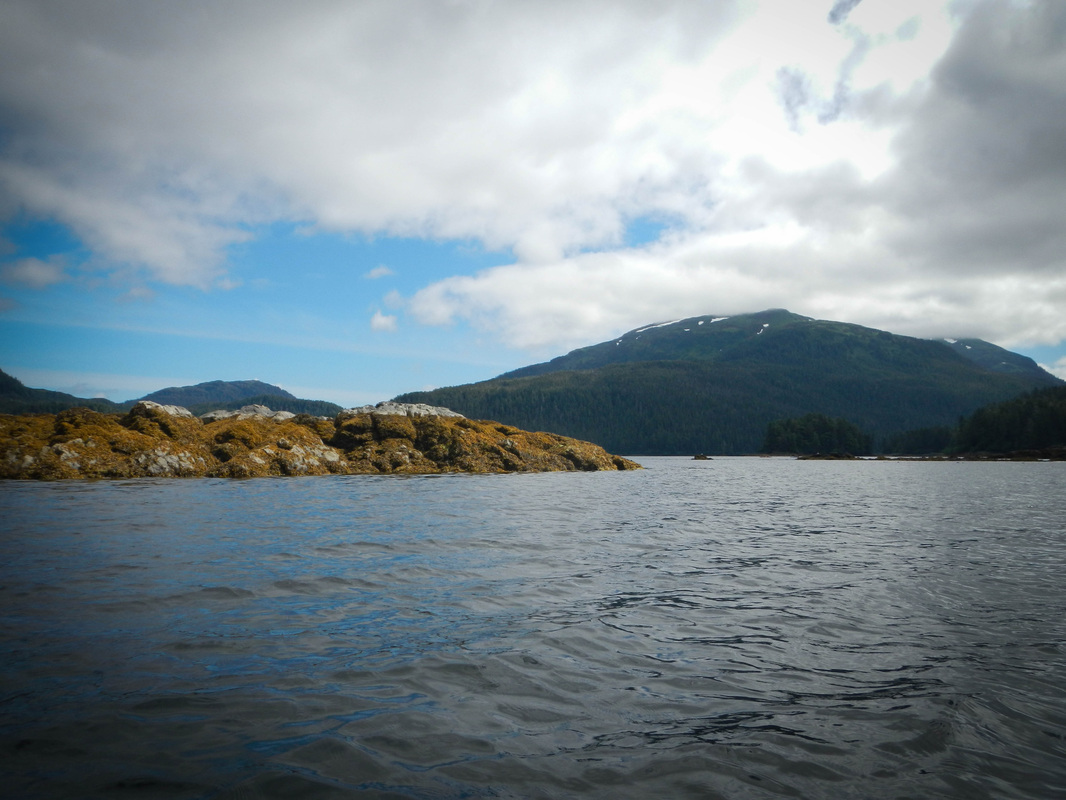Sea Lions, Bears, Salmon and Cedars: Paddling in SE Alaska with a Purpose
Jordan Holsinger is the newest member of the ASC team. He joined us as the Outreach Manager at the beginning of July after completing his Masters Degree in Environmental Science. Jordan personally bridges the gap between adventure and science as an endurance mountain biker and scientist whose previous research focused on the role of snow depth on plant-soil interactions in subalpine grasslands.
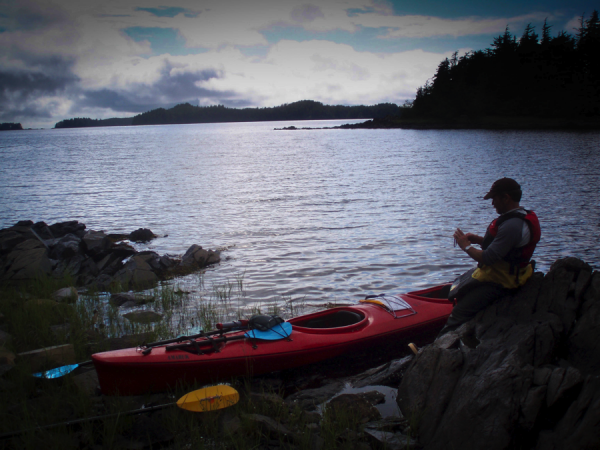
ASC guide Jaimie Walton after a long day of paddling. Photo by Jordan Holsinger.
From Jordan:
I’ve spent time around large things – studying elephants and rhinoceros in South Africa, playing in the peaks of the Rocky Mountain West – but nothing makes you feel small like sitting in a sea kayak being charged by a pack of sea lions (video after the break). Splashing and yelling, the 15-headed monster moved right for our boat and I began to wonder what might happen if they didn’t stop. Then the enormous creatures gracefully disappeared under the water, nowhere to be seen. Only one word is needed to explain and describe it simultaneously: ALASKA (which Gregg always insisted on saying in a deep, raspy whisper).
Sea lion encounter of the third kind in Klagg Bay. Video by Gregg Treinish.
We just returned from a two and a half week excursion to the rainforests, fjords and endless coastlines of Southeast Alaska. ASC had been hired to complete a field campaign for Stanford researcher Lauren Oakes on West Chichagof Island in the heart of the Tongass National Forest. Lauren studies the effects of climate change on yellow cedar forests. Yellow cedar is an important tree species in SE Alaska that has experienced a significant decline in recent years. Researchers have determined the decline is most likely due to loss of root insulation to extreme cold because of shallower snowpacks. Our mission was simple if not always easy: kayak along the coast and bushwhack through the dense temperate rainforest to collect temperature sensors ASC had helped install the year before to help untangle this mystery.
We were warned to be aware of bears, whose density on W. Chichagof is estimated to be more than 50 times greater than that of the Greater Yellowstone Ecosystem, home base for ASC, but no one had said anything about the sea lions.
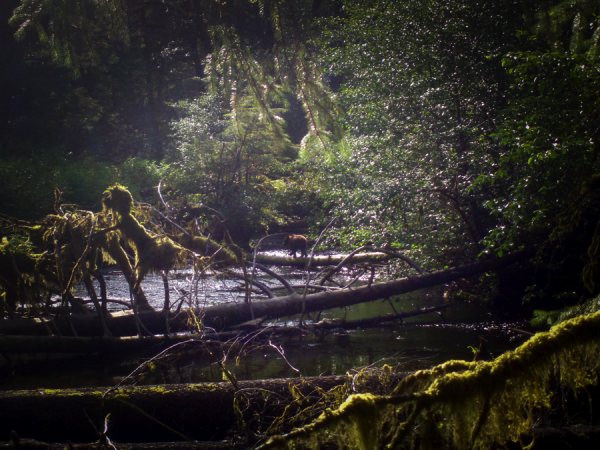
An Alaska grizzly crossing a salmon stream. Photo by Jordan Holsinger.
Alaska is a magical place full of adventure around every corner. Wildlife abounds. Bald eagles constantly soar overhead; marine mammals including sea otters, seals and sea lions curiously watch you paddle by; whales spray through their blowholes out in the bay and jellyfish blooms are so dense you seem to be gliding through a sea of jelly rather than water. Salmon team in the shallow waters at the salt-freshwater interface preparing to run upstream to spawn. Bushwhacking through the rainforest is made easier by following “bear highways” that are so well established and wide that at times you might think you are on a maintained hiking trail. We saw 8 bears during this trip, though certainly many more saw us given the overwhelming number of bear signs we observed – nearly every 10 yards along one salmon stream we hiked along.
Paddling through the jelly sea. Video by Gregg Treinish.
There is also a rich human history on Chichagof Island. Gold mining was once a large industry in this area and the remains are evident. We spent one afternoon exploring the ruins and remains of a mining town that previously flowed with gold and silver, juxtaposed to the pristine wilderness and towering peaks of the Tongass. Chichagof is also home to a vibrant fishing industry for good reason. I have never seen so many fish in my life. Salmon were stacked nose to tail, congregating to make their final spawning journey together. What free time we had was often spent fishing, hauling in some of the largest fish I’ve ever caught, including the intimidating chum or “dog” salmon at an estimated 10-15 lbs whose fangs make you tentative to even try to get the hook out.
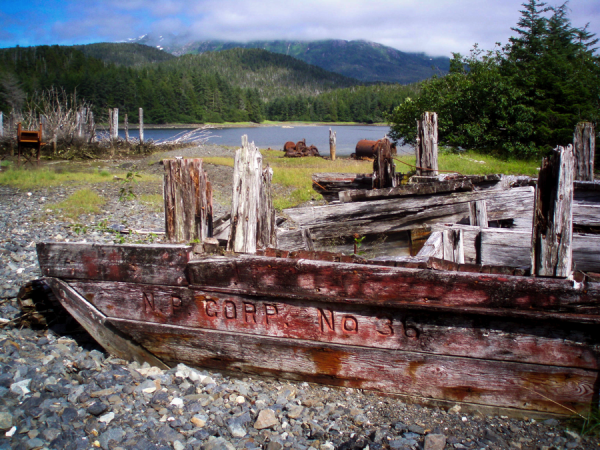
Chichagof mine debris on Klagg Bay. Photo by Jordan Holsinger.
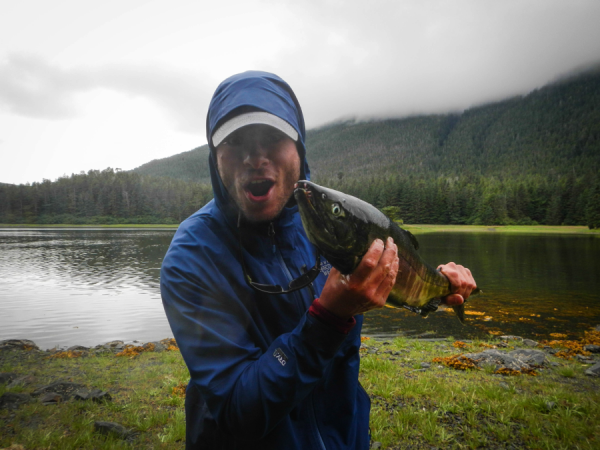
Gregg getting “chummy” with his salmon. Beware of the fangs. Photo by Jordan Holsinger.
Overall the trip was a tremendous success. We found adventure around every corner paddling, hiking and fishing. The scenery was incredible and the weather was amazing with very little rain and sunshine almost every day, a very stark contrast and welcome change to the constant wet the group last year encountered (which was so wet that Gregg claims he had an algae bloom growing across the chest of his shirt by the end of the trip, read his
account from last year).
Most importantly though, we were 100% successful in our field campaign, collecting every single sensor installed last year. While in the wilderness we also collected data for the US Forest Service’s Wilderness Characterization Study, helping land managers understand the impact of humans on wilderness areas.
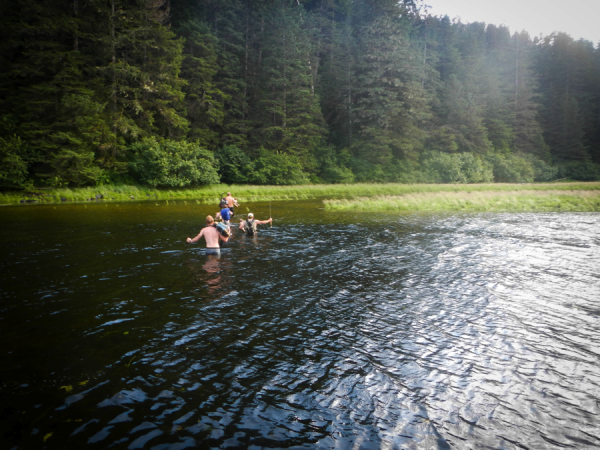
Cold river crossing back to the boats. Photo by Gregg Treinish.
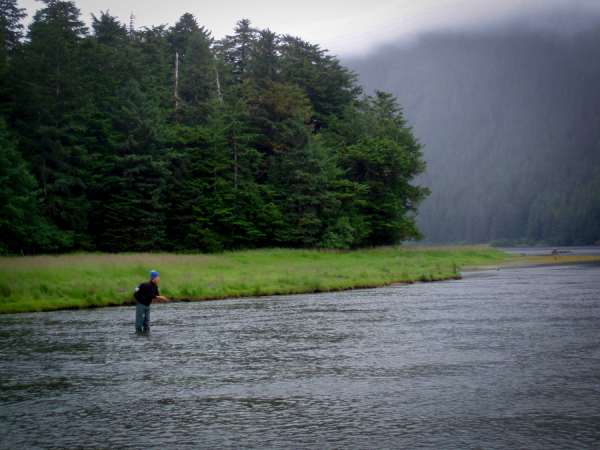
Throwing flies in pristine wilderness. Photo by Jordan Holsinger.
Our last day on the water was the sea lion encounter. Paddling back from our fishing spot on Sister Lake we were soon joined by a playful group of three sea lions. They followed us for nearly the entire way home, periodically surfacing and looking back to our kayak as if they were inviting us to follow them.
After passing a large gathering of sea otters, floating on their back balancing the young pups on their chests, we entered Klagg Bay where our sea lion friends joined the rest of their posse. After our close encounter they continued escorting us back, wishing us farewell as we headed home the next morning. But don’t worry, I will be back.
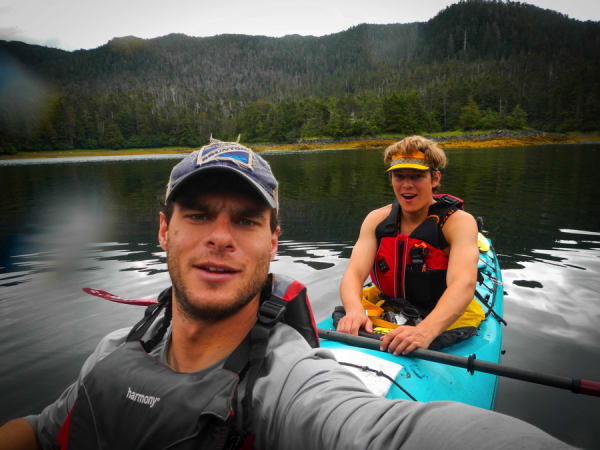
Gregg & McCain out on the water. Photo by Gregg Treinish
This trip is another example of an ASC guided outing offering. If you are a researcher who needs fieldwork done by capable backcountry users, or if you’re an organization or school group looking to plan an adventure-science outing that participates in
real scientific research collecting
valuable, desperately needed data visit our
guided outings page for more information.
You can also keep up with the adventures of the ASC Team in Gregg’s posts to National Geographic’s Explorers Journal. Subscribe to the Explorers Journal and visit Gregg’s page on National Geographic. Make sure to sign up for our newsletter, like us on Facebook and follow us on Twitter (@AdventurScience) to keep up with what we have going on.







